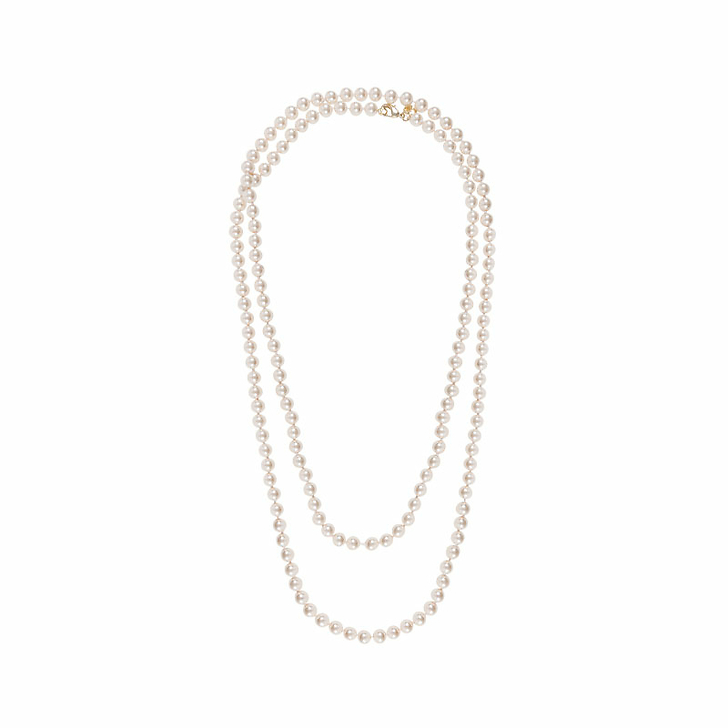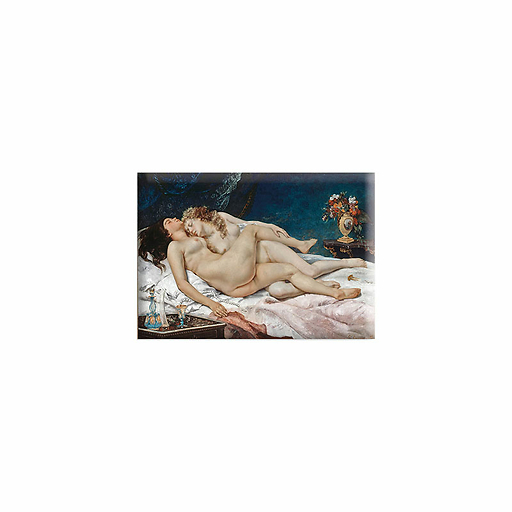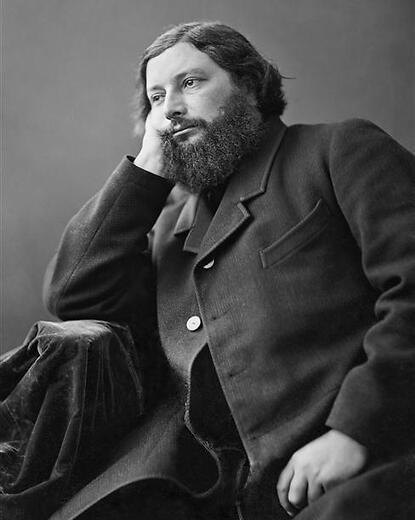This necklace was inspired by the necklace in Gustave Courbet's (1819-1877) "Le Sommeil (The Sleepers)", painted in 1866 and kept in the Petit Palais.
Painted specially for the diplomat Khalil-Bey, "The Sleepers" directly entered a private collection, without having to face the censure of the Salon...
Read more
This necklace was inspired by the necklace in Gustave Courbet's (1819-1877) "Le Sommeil (The Sleepers)", painted in 1866 and kept in the Petit Palais.
Painted specially for the diplomat Khalil-Bey, "The Sleepers" directly entered a private collection, without having to face the censure of the Salon. This type of transaction would be repeated with the delivery of the highly confidential Origin of the World to the same collector (Paris, Musée d'Orsay). A Turkish emissary based in Paris since 1860, Khalil-Bey assembled a fine set of paintings from his own century. He bought works by Delacroix, Chassériau and Rousseau with discernment, often through the intermediary of the dealer Durand-Ruel. The collector acquired Ingres' ultimate masterpiece, The Turkish Bath (Paris, Louvre Museum), and was particularly interested in Courbet as a painter of women and sensuality.
Flattering his patron's taste, the painter returned to a boudoir subject harking back to the licentious engravings and literary evocations of lesbian love. Playing on the contrast between complexions and hair colour, he represents two types of beauty intertwined in a tangle of silky sheets. The contemporary aspect of the life-size scene echoes Manet's "Olympia" (Paris, Musée d'Orsay), a painting in a very similar format to that of The Sleepers which caused a great scandal at the Salon in 1865.
Close







